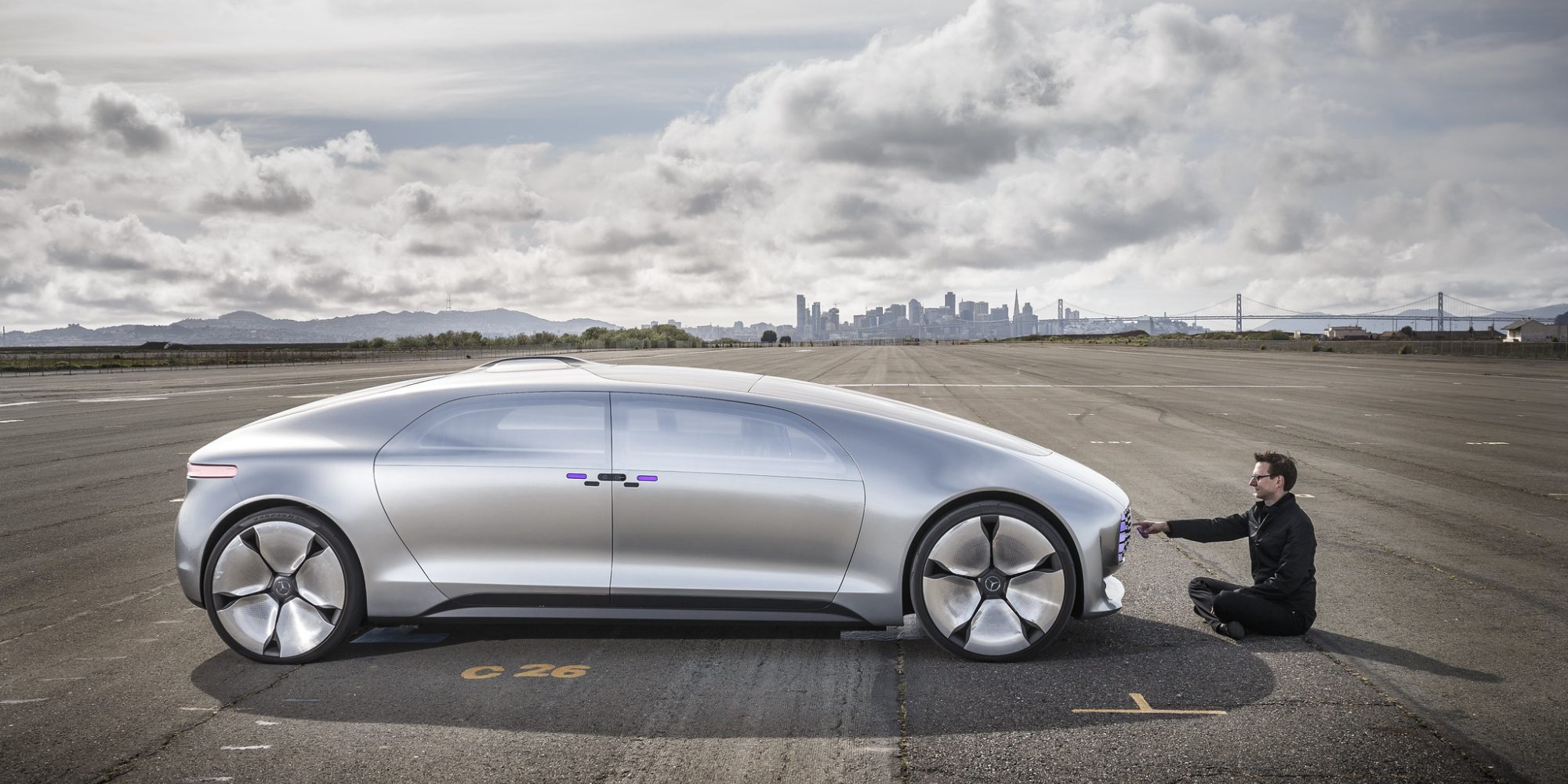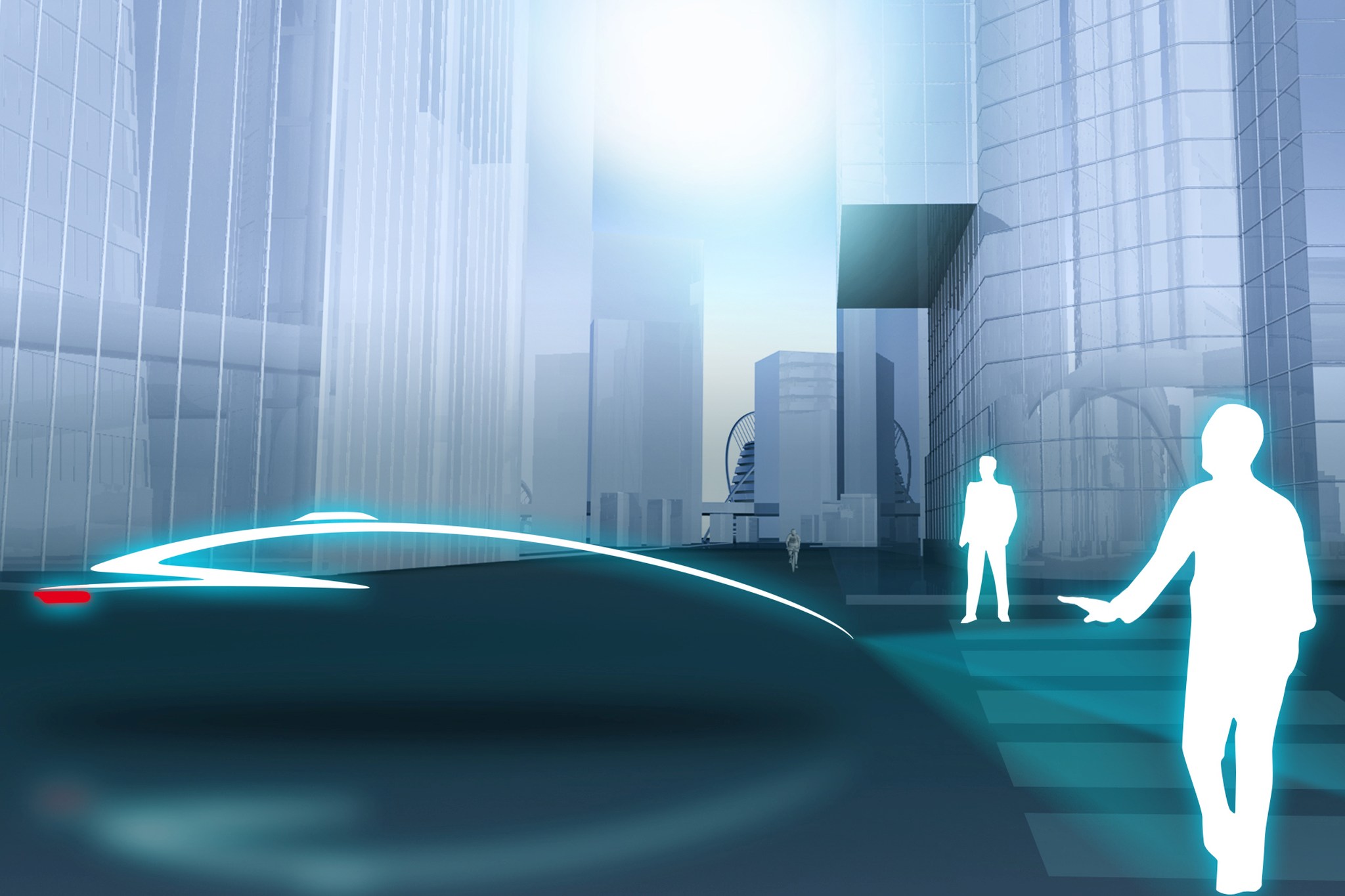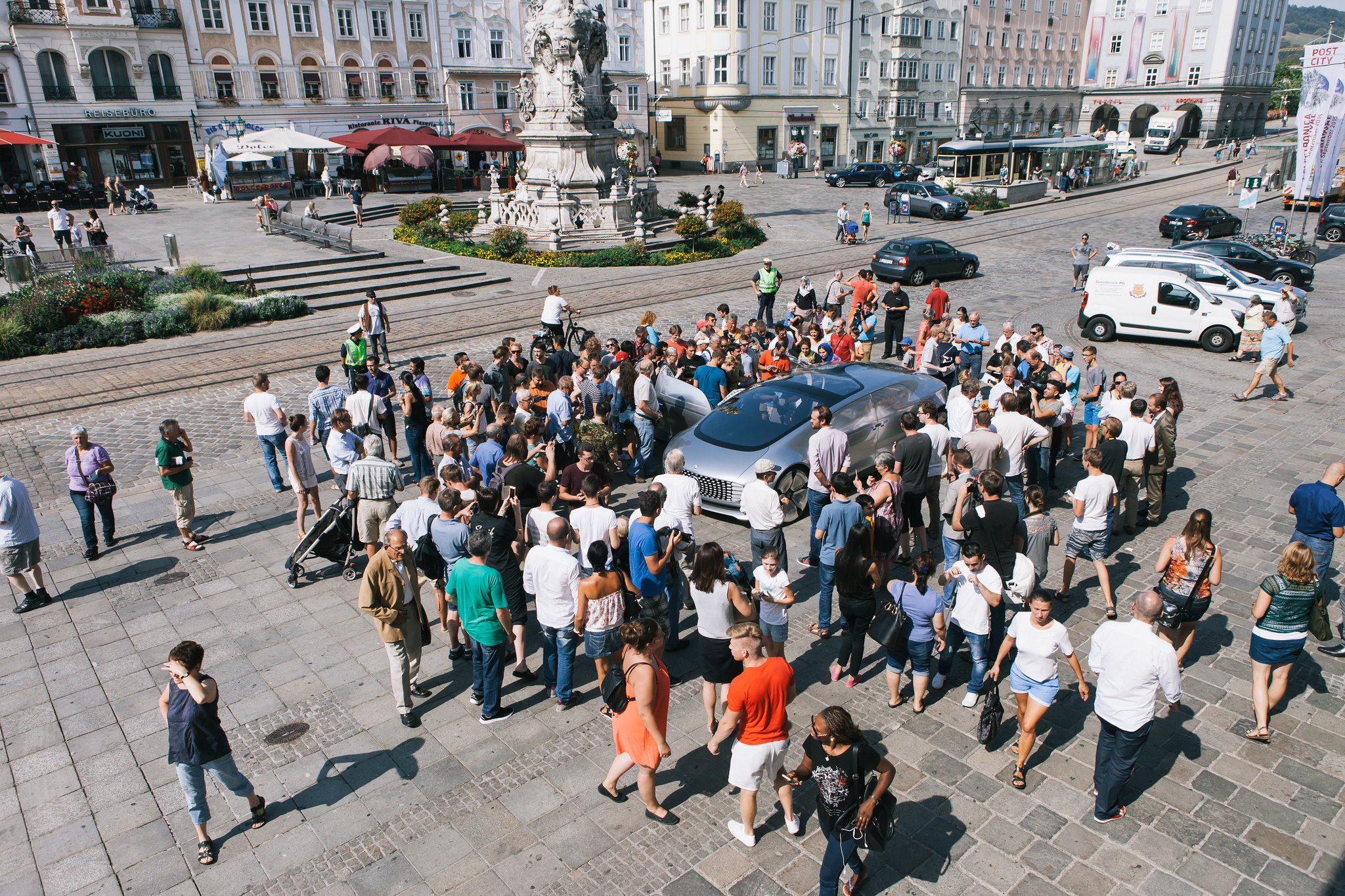Leading carmakers and manufacturers of high technology agree that autonomous vehicles will be common, everyday phenomena on our streets and highways in the forseeable future. However, the implementation of the corresponding technical and legal framework conditions still poses a tremendous challenge. Equally important will be the process of creating trust on the part of future users of such technology. Indispensable to this is a good basis of communication, a well-functioning vocabulary for human-machine interaction.
From 2013 to 2015, the Ars Electronica Futurelab has been working together with Mercedes-Benz on the question of how we human beings will be able to communicate with the smart self-driving cars of tomorrow. Here, the primary focus is on the futuristic vision of a shared space, a transportation zone used by humans and machines in which there are no longer defined lanes for cars or pedestrians and, instead, mutual courtesy of the road are the watchwords among equally privileged users.
In order for this traffic partnership to function properly and not lead to perceived insecurity or even dangerous situations, such a shared space has to be governed by social rules and accommodate new forms of interaction: on one hand, how people deal with cars; on the other hand, how cars deal with people.Do we want to interact with autonomous cars in a verbal language, via gestures, through the mediation of objects, or in some other way—for instance, when we spontaneously summon them or assign them the task of parking themselves? And how will these smart vehicles, in turn, get in contact with us? This is ultimately a matter of developing a bidirectional repertoire of signs for use by people and autos that’s characterized by utmost clarity and comprehensibility. In the future, every child has to be able to instantaneously ascertain whether an approaching vehicle is being steered manually or running on autopilot, and whether he/she has been recognized as a human pedestrian and, thus, can safely cross the street.
As an initial approach to this complex of issues in 2014, Mercedes-Benz staged Future Talk Robotics, a conference conceived jointly with the Ars Electronica Futurelab. The Ars Electronica Futurelab, for its part, also developed Shared Space Spaxels and Shared Space Bots, two interactive proving grounds to test futuristic facts & circumstances today: simulation of robotic mobility scenarios and evaluation of specific approaches to interaction.
Read more about the collaboration with Mercedes-Benz in the Interview with Martina Mara and Christopher Lindinger on the Ars Electronica Blog:

Greetings, robot car!
A driving humanoid? – Rather not. The Ars Electronica Futurelab and Mercedes-Benz are exploring the future of human-machine interaction. Image: Mercedes-Benz
Credits
Ars Electronica Futurelab: Roland Haring, Christopher Lindinger, Martina Mara, Andreas Jalsovec, Florian Berger, Otto Naderer, Peter Freudling, Dietmar Peter, Martin Mörth, Peter Holzkorn
Mercedes-Benz: Sabine Engelhardt, Irene Fuhrmann, Koert Groeneveld, Alexander Mankowsky, Vera Schmidt



